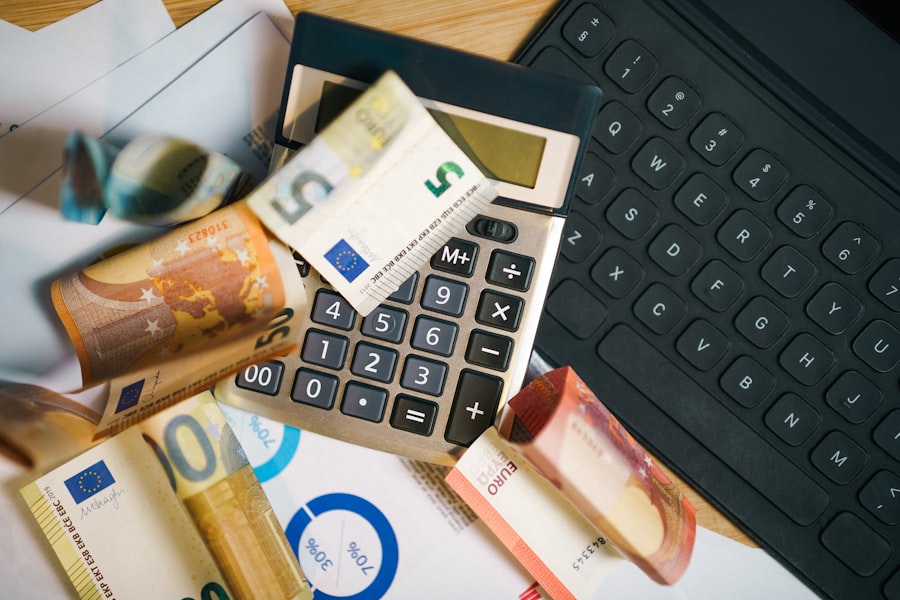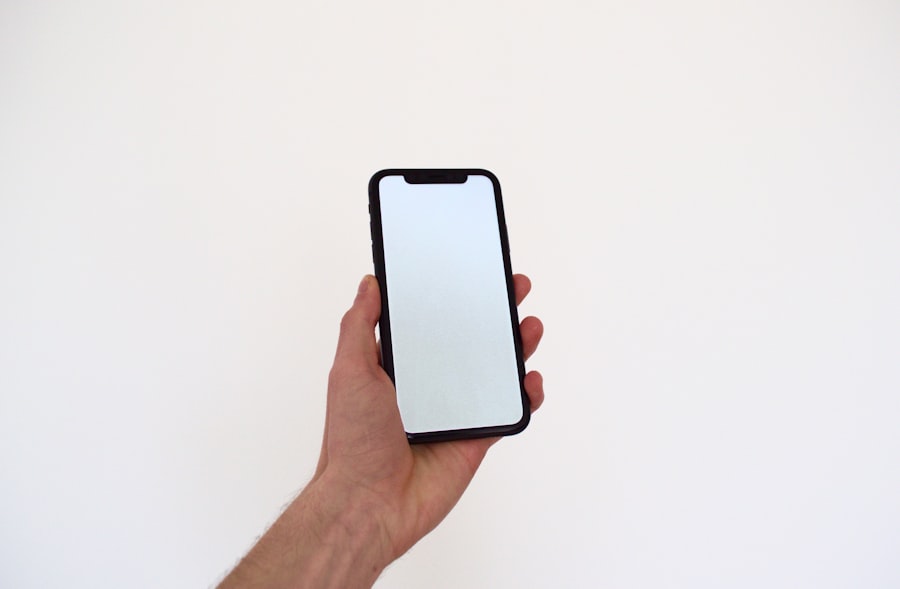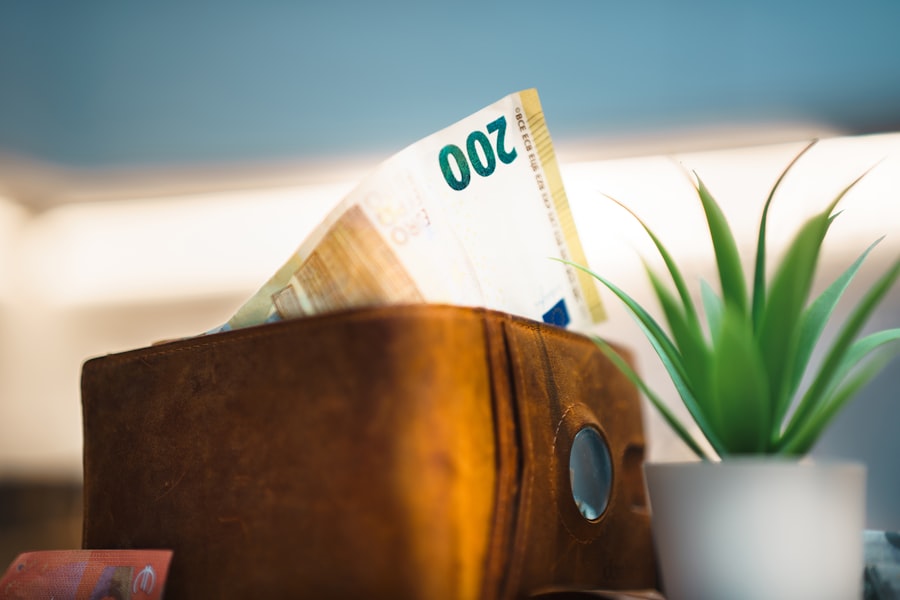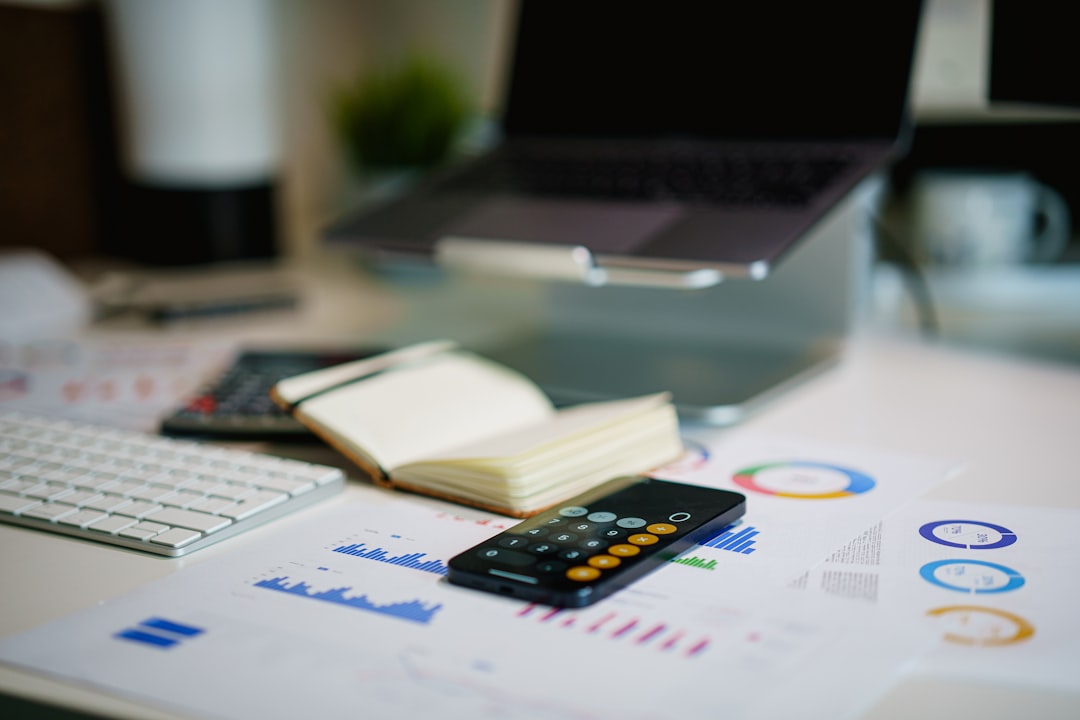In an increasingly digital world, managing personal finances has become more accessible and efficient, thanks in large part to budgeting apps. These applications are designed to help users track their income, expenses, and savings goals, providing a structured approach to financial management. With the rise of smartphones, budgeting apps have gained popularity as they allow users to monitor their financial health on the go.
The convenience of having a financial planner in your pocket cannot be overstated; it empowers individuals to make informed decisions about their spending habits and savings strategies. Budgeting apps cater to a wide range of users, from those who are just beginning to take control of their finances to seasoned budgeters looking for advanced features. They often come equipped with various tools that simplify the budgeting process, such as expense categorization, bill reminders, and financial goal tracking.
As more people recognize the importance of financial literacy and responsible money management, the demand for effective budgeting solutions continues to grow. This article will explore the essential features of budgeting apps, highlight some of the best options available for iPhone users, and provide insights into how these tools can enhance financial well-being.
Key Takeaways
- Budgeting apps help users track and manage their finances on the go
- Key features to look for in a budgeting app include expense tracking, goal setting, and bill reminders
- Some top budgeting apps for iPhone include Mint, YNAB, and PocketGuard
- Using a budgeting app can help users save money, reduce debt, and achieve financial goals
- To maximize savings with a budgeting app, users should set realistic budgets, track spending, and adjust as needed
Key Features to Look for in a Budgeting App
When selecting a budgeting app, it is crucial to consider the features that will best meet your financial needs. One of the most important aspects is user-friendliness; an intuitive interface can significantly enhance the user experience. A well-designed app should allow users to easily navigate through various sections, input data without hassle, and access reports or summaries with minimal effort.
The ability to customize categories for income and expenses is another vital feature, as it enables users to tailor their budgeting approach according to their unique financial situations. Another key feature is synchronization with bank accounts and credit cards. Many modern budgeting apps offer automatic transaction imports, which can save users time and reduce the likelihood of errors in manual entry.
This feature allows for real-time tracking of spending habits and provides a clearer picture of one’s financial status. Additionally, look for apps that offer goal-setting capabilities, enabling users to set specific savings targets or debt repayment plans. This functionality not only motivates users but also helps them stay accountable in their financial journey.
Top Budgeting Apps for iPhone

Among the myriad of budgeting apps available for iPhone users, several stand out due to their robust features and positive user feedback. One such app is Mint, which has gained a reputation for its comprehensive financial management tools. Mint allows users to link their bank accounts, credit cards, and investment accounts, providing a holistic view of their finances.
The app categorizes transactions automatically and offers insights into spending patterns, making it easier for users to identify areas where they can cut back. Another noteworthy app is YNAB (You Need A Budget), which takes a proactive approach to budgeting by encouraging users to allocate every dollar they earn towards specific expenses or savings goals. YNAB’s unique methodology focuses on giving every dollar a job, which can lead to more mindful spending habits.
The app also offers educational resources and workshops to help users improve their budgeting skills. For those who prefer a more visual approach, GoodBudget is an excellent choice. This app utilizes the envelope budgeting system, allowing users to allocate funds into virtual envelopes for different spending categories.
This method can be particularly effective for individuals who thrive on visual organization.
Benefits of Using a Budgeting App
| Benefits of Using a Budgeting App |
| 1. Better financial management |
| 2. Easy tracking of expenses |
| 3. Improved savings habits |
| 4. Access to financial insights and reports |
| 5. Setting and achieving financial goals |
The advantages of utilizing a budgeting app extend beyond mere convenience; they can significantly impact an individual’s financial health. One primary benefit is enhanced awareness of spending habits. By tracking expenses in real-time, users can identify patterns that may not be apparent when reviewing bank statements alone.
This awareness can lead to more informed decisions about discretionary spending and encourage individuals to prioritize essential expenses over non-essential ones.
Moreover, budgeting apps often provide valuable insights through analytics and reports.
Many applications generate visual representations of spending trends over time, allowing users to see how their financial behaviors evolve.
This data can be instrumental in setting realistic financial goals and measuring progress toward achieving them. Additionally, many budgeting apps include features that help users plan for irregular expenses, such as annual subscriptions or holiday shopping, which can prevent budgetary surprises and promote better financial preparedness.
How to Maximize Savings with a Budgeting App
To truly harness the power of a budgeting app for maximizing savings, users should adopt strategic practices that align with their financial goals. One effective method is to set specific savings targets within the app. By defining clear objectives—such as saving for a vacation or building an emergency fund—users can allocate funds accordingly and track their progress over time.
Many apps allow users to create separate savings goals, making it easier to visualize how close they are to achieving each target. Another strategy involves regularly reviewing and adjusting budgets based on changing circumstances. Life events such as job changes, moving expenses, or unexpected bills can impact financial situations significantly.
By revisiting budgets frequently and making necessary adjustments within the app, users can ensure they remain on track toward their savings goals. Additionally, taking advantage of features like spending alerts or notifications can help users stay accountable and avoid overspending in certain categories.
Tips for Using a Budgeting App Effectively

Consistency is Key
Regularly updating the app with new transactions ensures that users have an accurate picture of their financial situation at all times. Setting aside time each week or month to review expenses and update budgets can foster a habit of mindfulness regarding spending.
Take Advantage of Educational Resources
Many budgeting apps offer articles, videos, or webinars that cover various aspects of personal finance management. By taking advantage of these resources, users can deepen their understanding of budgeting principles and learn new strategies for improving their financial health.
Learn from Others
Participating in community forums or discussions within the app can provide valuable insights from other users who may share similar financial challenges or goals.
Comparison of Budgeting Apps for iPhone
When comparing budgeting apps for iPhone users, several factors come into play that can influence one’s choice. For instance, while Mint offers comprehensive features at no cost, it generates revenue through advertisements and may not suit those who prefer an ad-free experience. In contrast, YNAB operates on a subscription model but provides extensive educational resources and a unique budgeting philosophy that appeals to many users seeking a proactive approach.
GoodBudget stands out with its envelope system but lacks some advanced features like automatic bank syncing found in other apps. Users who prioritize simplicity may find GoodBudget appealing due to its straightforward interface and focus on cash-based budgeting methods. On the other hand, apps like PocketGuard focus on helping users understand how much disposable income they have after accounting for bills and necessities, which can be particularly useful for those who struggle with overspending.
Choosing the Best Budgeting App for Your Needs
Selecting the right budgeting app ultimately depends on individual preferences and financial goals. Users should consider factors such as ease of use, desired features, and whether they prefer a free or subscription-based model when making their decision. By carefully evaluating these aspects and exploring various options available on the iPhone platform, individuals can find an app that aligns with their unique financial journey.
In summary, budgeting apps have revolutionized personal finance management by providing tools that enhance awareness and control over one’s finances. With numerous options available tailored to different needs and preferences, finding the right app can empower individuals to take charge of their financial futures effectively.
If you are looking for the best budgeting app on iPhone, you may want to check out this article on One critical feature is the ability to categorize expenses.
A robust app should allow users to create custom categories or use predefined ones, making it easier to track spending in specific areas such as groceries, entertainment, or transportation.
This categorization helps users identify spending patterns and make adjustments as necessary. Another important feature is goal setting. Many budgeting apps enable users to set financial goals, whether it’s saving for a vacation, paying off debt, or building an emergency fund.
The app should provide tools to track progress toward these goals, offering visual representations such as graphs or charts that illustrate how close users are to achieving their objectives. Additionally, alerts and notifications can be invaluable; they remind users when bills are due or when they are approaching their budget limits in specific categories, helping them stay accountable.
Popular Budgeting Apps to Consider
| App Name |
Cost |
Platform |
Features |
| Mint |
Free |
iOS, Android |
Budget tracking, bill reminders, credit score monitoring |
| You Need a Budget (YNAB) |
84/year |
iOS, Android |
Zero-based budgeting, goal tracking, debt paydown tools |
| Goodbudget |
Free basic plan, 7/month for plus |
iOS, Android |
Envelope budgeting, expense tracking, sync across devices |
| PocketGuard |
Free basic plan, 3.99/month for plus |
iOS, Android |
Spending analysis, bill tracking, personalized savings recommendations |
Several budgeting apps have gained traction in recent years due to their user-friendly interfaces and comprehensive features. One notable example is Mint, which offers a free platform that allows users to track all their financial accounts in one place. Mint automatically categorizes transactions and provides insights into spending habits while also offering personalized tips for saving money.
Its goal-setting feature is particularly popular among users looking to save for specific purposes. Another contender is YNAB (You Need A Budget), which takes a proactive approach to budgeting by encouraging users to allocate every dollar they earn toward specific expenses or savings goals. YNAB emphasizes the importance of planning ahead and adjusting budgets as necessary, making it an excellent choice for those who want a more hands-on approach to managing their finances.
The app also offers educational resources that help users develop better budgeting skills. For those who prefer a more minimalist approach, PocketGuard simplifies budgeting by showing users how much disposable income they have after accounting for bills, goals, and necessities. This straightforward approach can be particularly appealing for individuals who may feel overwhelmed by more complex budgeting systems.
How to Choose the Right Budgeting App for You
Choosing the right budgeting app involves assessing your personal financial situation and understanding your specific needs. Start by identifying what you want to achieve with the app—whether it’s tracking daily expenses, saving for a particular goal, or managing debt. This clarity will help narrow down your options significantly.
For instance, if your primary goal is debt reduction, you might prioritize apps that offer robust debt tracking features. Additionally, consider the user interface and ease of use. An app that is difficult to navigate can lead to frustration and decreased usage over time.
Look for apps that offer intuitive designs and clear instructions on how to use various features effectively. Reading user reviews can also provide insight into the app’s usability and overall satisfaction among its user base. Lastly, evaluate any associated costs.
While many budgeting apps offer free versions with essential features, some may require a subscription for access to advanced tools or ad-free experiences. Weigh the benefits of these premium features against your budget and determine whether they align with your financial goals.
Tips for Maximizing the Effectiveness of Budgeting Apps

To get the most out of your budgeting app, consistency is key. Regularly updating your transactions and reviewing your budget will help you stay on track with your financial goals. Set aside time each week or month to go through your expenses and adjust your budget as needed.
This practice not only keeps your financial data accurate but also reinforces your commitment to managing your finances effectively. Another tip is to take advantage of the educational resources many budgeting apps offer. Whether through articles, videos, or webinars, these resources can provide valuable insights into personal finance management and help you develop better budgeting habits.
Engaging with these materials can enhance your understanding of financial concepts and empower you to make more informed decisions. Additionally, consider involving family members or partners in the budgeting process if applicable. Many apps allow multiple users or shared accounts, which can foster open communication about finances and encourage collective accountability in reaching shared financial goals.
Common Mistakes to Avoid When Using Budgeting Apps
While budgeting apps can be incredibly helpful tools, there are common pitfalls that users should be aware of to ensure they are maximizing their effectiveness. One frequent mistake is neglecting regular updates. Users may download an app with good intentions but fail to input transactions consistently or review their budgets regularly.
This lack of engagement can lead to inaccurate data and ultimately hinder progress toward financial goals. Another common error is setting unrealistic budgets or goals. It’s essential to create budgets that reflect actual spending habits rather than idealized versions of how one would like to spend money.
For example, if you typically spend $300 on groceries each month but set a budget of $200 based on what you think you should spend, you may quickly become discouraged when you exceed that limit. Instead, start with realistic figures based on historical data and adjust as necessary. Lastly, some users may overlook the importance of utilizing all available features within the app.
Many budgeting apps come equipped with tools designed to enhance financial management—such as goal tracking or bill reminders—but users may not take full advantage of these capabilities due to unfamiliarity or lack of exploration.
Taking Control of Your Finances with Budgeting Apps
In today’s fast-paced world, taking control of one’s finances is more important than ever, and budgeting apps provide an effective means of achieving this goal.
By offering tools that simplify tracking income and expenses while promoting accountability through goal setting and alerts, these applications empower users to make informed financial decisions.
As individuals navigate their unique financial journeys, leveraging the capabilities of budgeting apps can lead to improved financial literacy and ultimately greater financial stability.
The journey toward effective budgeting begins with selecting an app that aligns with personal needs and preferences while remaining committed to regular engagement with the tool. By avoiding common pitfalls and maximizing the features available within these applications, users can cultivate healthier financial habits that pave the way for long-term success in managing their finances effectively.
If you are looking for a comprehensive list of budgeting apps to help you manage your finances, you may also be interested in exploring the article on If your group consists of individuals who are not particularly tech-savvy, opting for an app with a straightforward layout and clear instructions can significantly enhance the user experience.
Payment Method Compatibility
Another critical aspect to consider is the app’s compatibility with various payment methods. Some bill splitting apps allow users to pay each other directly through the platform, while others may require external payment services like PayPal or Venmo. If your group frequently uses a specific payment method, it would be prudent to choose an app that integrates seamlessly with that service.
Multi-Currency Support
Consider whether the app supports multiple currencies if your group travels internationally or consists of members from different countries. This flexibility can prevent confusion and ensure that everyone can participate in shared expenses without hassle.
Tips for Streamlining Group Expenses with a Bill Splitting App

To maximize the effectiveness of a bill splitting app, it is essential to establish clear guidelines for how expenses will be tracked and managed within your group. One effective strategy is to designate a “financial leader” or point person responsible for inputting expenses into the app. This individual can help ensure that all costs are recorded accurately and promptly, reducing the risk of forgotten charges or miscalculations.
By having a designated person in charge, you can streamline the process and create a sense of accountability among group members. Additionally, encourage all participants to regularly check their balances within the app. Frequent updates can help individuals stay aware of their financial obligations and prevent any last-minute surprises when it comes time to settle up.
Setting reminders for group members to review their expenses can also be beneficial, especially after significant outings or events. By fostering a culture of transparency and communication regarding expenses, your group can effectively manage shared costs while minimizing potential conflicts.
Common Challenges and Solutions for Using a Bill Splitting App
| Challenges |
Solutions |
| Difficulty in splitting uneven bills |
Use an app that allows for easy customization of bill amounts |
| Issues with tracking who has paid |
Choose an app that provides a clear overview of payments made |
| Complications with splitting bills with large groups |
Opt for an app that can handle splitting bills among multiple people |
| Confusion over currency conversions |
Find an app that supports multiple currencies and offers accurate conversions |
Despite their many advantages, bill splitting apps are not without challenges. One common issue is the potential for discrepancies in expense tracking. For example, if one member forgets to input an expense or miscalculates their share, it can lead to confusion and frustration among the group.
To mitigate this risk, it is crucial to establish a protocol for verifying expenses before they are finalized in the app. Regular check-ins or discussions about outstanding balances can help ensure that everyone is on the same page and that any errors are promptly addressed. Another challenge is managing payments among group members who may have different preferences for settling debts.
Some individuals may prefer cash transactions, while others might favor digital payments through an app. To navigate this issue effectively, consider establishing a standard payment method for your group and encouraging everyone to adopt it. If certain members are resistant to change, offering assistance in setting up their accounts or demonstrating how to use the chosen payment method can help ease their transition and promote consistency in settling expenses.
The Importance of Communication When Using a Bill Splitting App
Effective communication is paramount when utilizing a bill splitting app within a group setting.
Open dialogue about financial expectations and responsibilities can significantly enhance the overall experience for all participants.
Before embarking on any shared activity that involves expenses, it is advisable to have a preliminary discussion about how costs will be divided and what each person’s financial obligations will be.
This proactive approach can help prevent misunderstandings and ensure that everyone is comfortable with the arrangement. Furthermore, maintaining ongoing communication throughout the process is equally important. Encourage group members to voice any concerns or questions they may have regarding expenses as they arise.
This transparency fosters trust among participants and allows for timely resolution of any issues that may emerge during the course of managing shared costs. By prioritizing communication, your group can create a supportive environment where financial matters are handled collaboratively and amicably.
Security and Privacy Considerations for Using a Bill Splitting App

As with any digital platform that involves financial transactions, security and privacy are critical considerations when using a bill splitting app. Users should prioritize apps that employ robust encryption methods to protect sensitive information such as bank account details and personal data. Before selecting an app, take the time to research its security features and read user reviews regarding any past security breaches or concerns.
Additionally, it is essential to understand the privacy policies associated with the app you choose. Some applications may collect data on user behavior or share information with third parties for marketing purposes. Familiarizing yourself with these policies can help you make informed decisions about which app aligns with your privacy preferences.
Opting for apps that prioritize user privacy and offer customizable settings for data sharing can provide peace of mind as you manage your group’s finances.
How to Track and Manage Group Expenses Effectively with a Bill Splitting App
To effectively track and manage group expenses using a bill splitting app, it is vital to utilize all available features offered by the platform. Many apps provide options for categorizing expenses, which can help users understand where their money is going and identify trends in spending behavior. For instance, categorizing expenses into dining, entertainment, or travel can provide valuable insights into how much each member contributes in different areas.
Additionally, leveraging features such as reminders for upcoming payments or notifications for new expenses can enhance overall management of group finances. Setting up alerts ensures that no one forgets about outstanding balances or upcoming due dates, promoting timely payments and reducing stress within the group. By actively engaging with these tools, users can maintain better control over their shared expenses and foster a more organized approach to financial management.
Integrating a Bill Splitting App into Your Financial Planning and Budgeting
Incorporating a bill splitting app into your broader financial planning and budgeting strategy can yield significant benefits beyond just managing shared expenses. By analyzing spending patterns revealed through the app, individuals can gain insights into their overall financial habits and make informed decisions about future expenditures. For example, if you notice that dining out frequently contributes significantly to your shared expenses, you might consider adjusting your personal budget to allocate more funds toward dining or explore alternatives such as cooking at home.
Furthermore, using a bill splitting app in conjunction with personal budgeting tools can create a comprehensive financial management system. Many budgeting apps allow users to set spending limits in various categories while tracking overall income and expenses. By integrating these tools with your bill splitting app, you can develop a holistic view of your finances that encompasses both individual and shared costs.
This approach not only enhances accountability but also empowers users to make more informed financial decisions as they navigate their social interactions and shared responsibilities.
If you’re looking for a way to track your expenses and budget more effectively, you may want to check out this article on how to create a budget tracker in Excel. This tool can help you keep better track of your spending and make sure you’re staying on top of your financial goals. You can find more information on budget tracking and other financial tools on Valapoint.
















